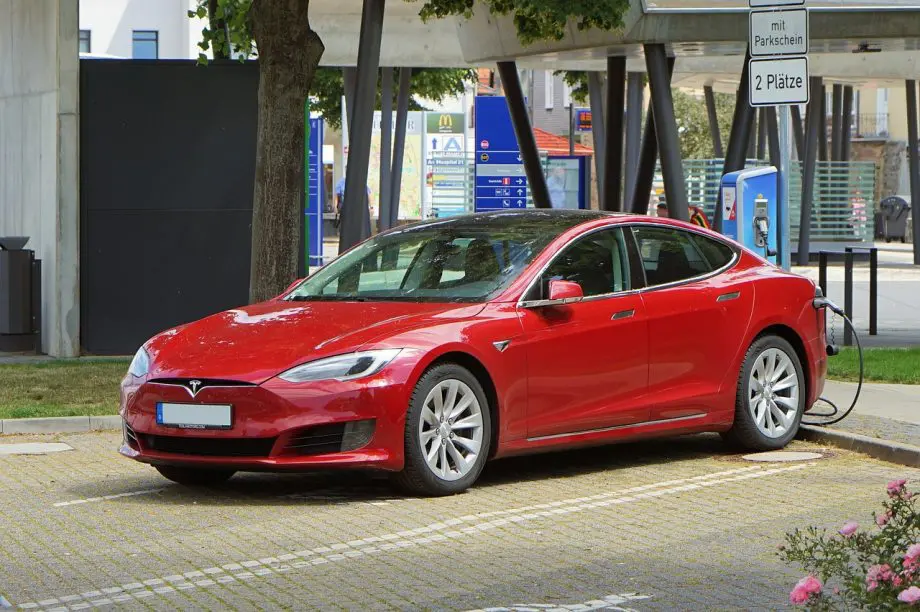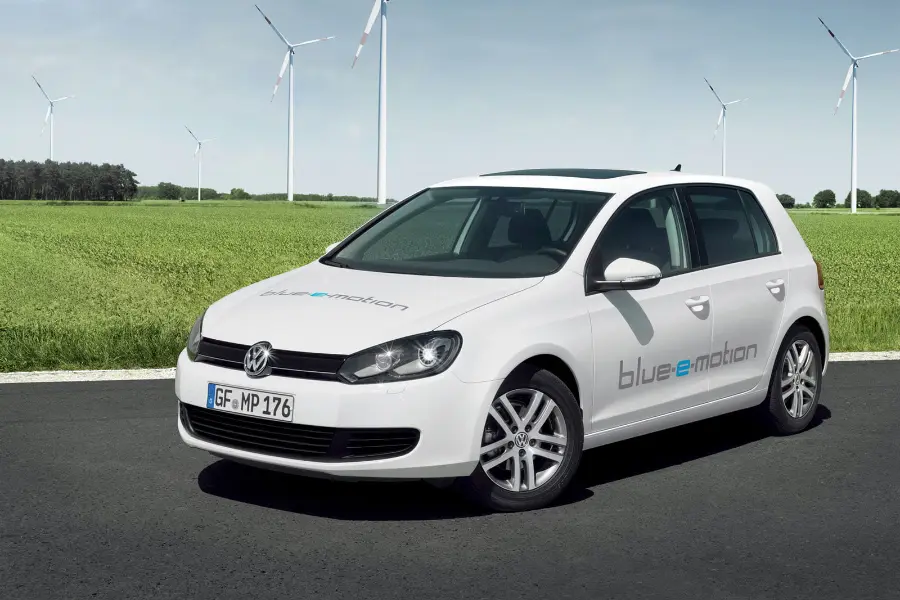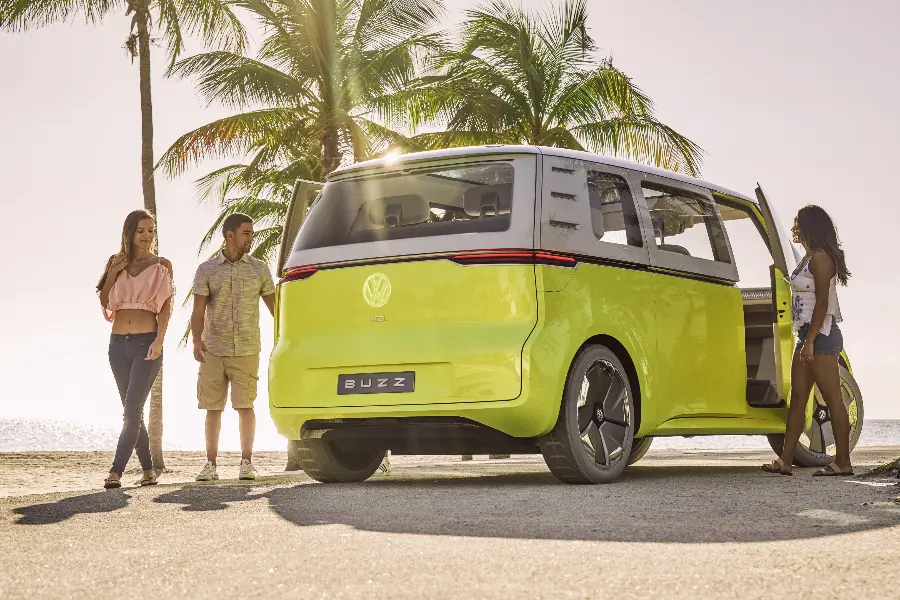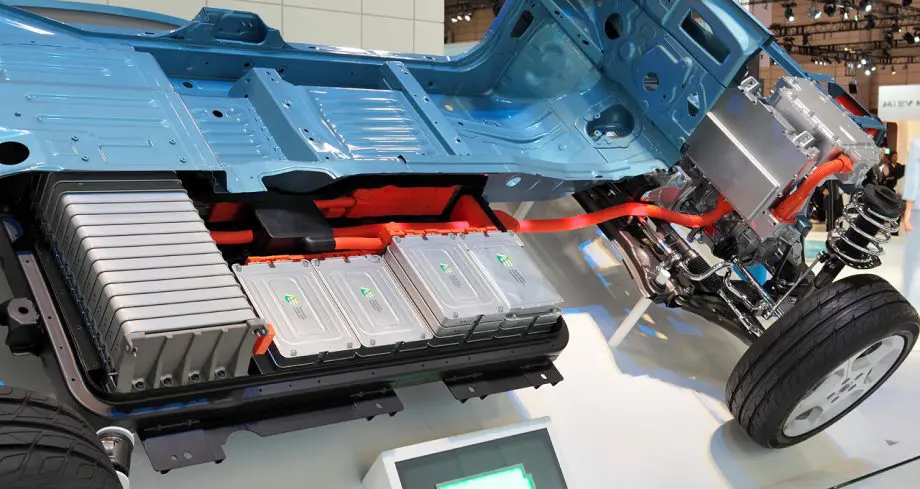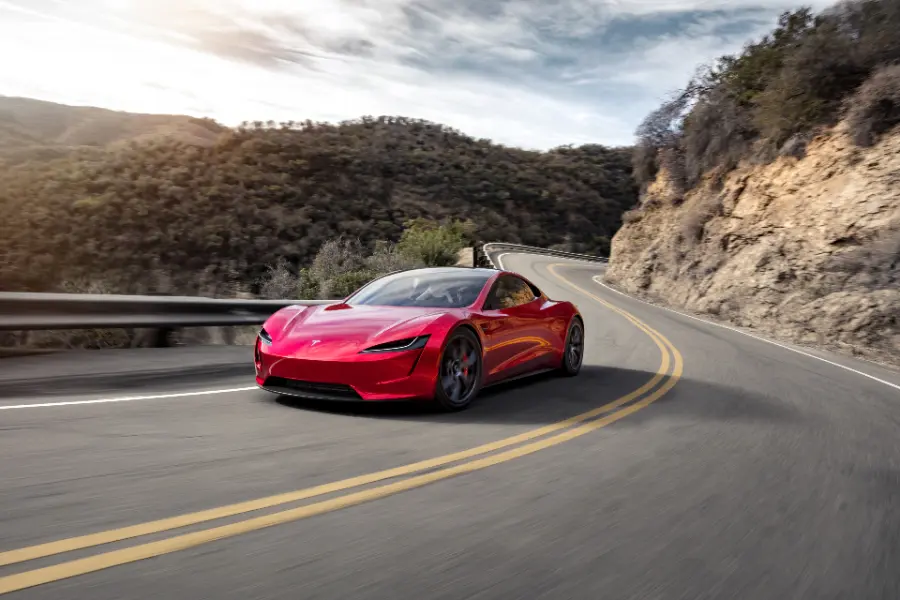
Join us as we discover the types of electric vehicles and the advantages of EVs as we delve into a world where technology, ecology, and economy intertwine.
In a world increasingly conscious of its carbon footprint, understanding the Types of Electric Vehicles and the Advantages of EVs is more important than ever.
Swapping the roar of a gasoline engine for the hum of an electric motor isn’t just a trend, it’s the key to a greener future.
Buckle up, as we take a fascinating journey into the realm of electric vehicles, exploring their variety and advantages, from boosting environmental sustainability to slashing fuel costs.
A ride like no other, it will leave you charged with a whole new perspective!
Types of Electric Vehicles – Advantages of EVs
Embarking on the adventure that is the Types of Electric Vehicles and the Advantages of EVs, we’re about to delve into a world where technology, ecology, and economy intertwine.
From unraveling the basics of electric vehicles and their history to examining their types, key components, and how they work, we cover it all.
We’ll delve into topics like charging stations, the role of batteries, and even the environmental impact of these technological marvels.
Buckle up, and prepare for a deep dive into the future of transportation, exploring the economic, environmental, and societal benefits of adopting electric vehicles.
There’s a lot to unpack, and we can’t wait to get started!
A Brief Introduction to electric vehicles
The world of electric vehicles is a vast and exciting one, brimming with innovation and promise. But what exactly are electric vehicles?
At their core, they are vehicles powered by an electric motor instead of the conventional internal combustion engine.
This doesn’t mean they’re a recent invention. You might be surprised to learn that electric vehicles (EVs) have been around since the late 19th century!
Yet, their time in the limelight didn’t really kick off until the early 21st century, when concerns about environmental sustainability and the rising cost of fuel pushed them to the forefront.
But there’s a lot more to the world of EVs, as we’ll find out.
Types of EVs

Now, when we talk about electric vehicles, it’s not just about cars. The umbrella term ‘EVs’ covers a variety of vehicle types, each with its own set of benefits.
We have Battery Electric Vehicles (BEVs), like the famous Tesla Model S or the Nissan Leaf, which are fully powered by a rechargeable battery pack and an electric motor.
They shine in their zero tailpipe emissions, offering a completely green alternative to conventional cars.
Then, there are the Plug-in Hybrid Electric Vehicles (PHEVs), like the Ford Fusion Energi or Volvo XC90 T8, which house both an electric motor and a gasoline engine.
They provide the flexibility of an extended driving range and the benefit of switching to electric mode for short commutes.
Conventional Hybrid Electric Vehicles (HEVs) are another category, think Toyota Prius, that use a gasoline engine and an electric motor. The key is that the electric motor is used at low speeds, with the gasoline engine kicking in as speed increases.
And we can’t forget Fuel Cell Electric Vehicles (FCEVs) like the Toyota Mirai and Hyundai Nexo, which generate electricity from hydrogen stored in high-pressure tanks on board.
The benefits of EVs are numerous. From reducing carbon emissions and promoting cleaner air to providing an impressively quiet ride and lower fuel costs, the list is extensive.
Not to mention the less frequent maintenance, thanks to fewer moving parts compared to an internal combustion engine vehicle.
In this post, we’re going to explore these types of electric vehicles and their advantages in much more detail. So, stay with us, it’s going to be quite the electric ride!
Understanding Electric Vehicles: The Basics
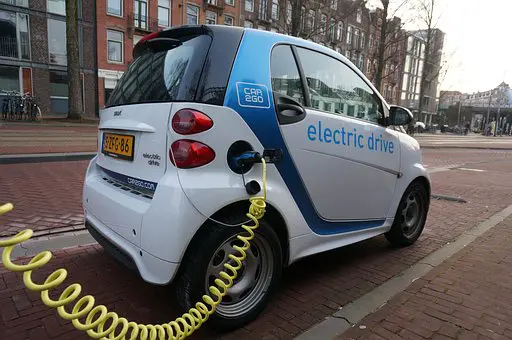
So, you’ve decided to join us on this electrifying journey, excellent! Now, before we get too far into the nitty-gritty, it’s essential to lay down some groundwork.
In this section, we’re going back to the basics, making sure you’re all charged up with a clear understanding of electric vehicles.
We’ll define what electric vehicles are, take a trip down memory lane to their roots, and talk about why they’re becoming increasingly important in our modern world.
With this knowledge at hand, we’ll be ready to tackle the more intricate aspects of electric vehicles. So, grab a cup of your favorite beverage, and let’s get started!
A Definition of Electric Vehicles
Let’s kick off with a simple question: What exactly is an electric vehicle? At its most basic, an electric vehicle (EV) is any vehicle powered primarily by an electric motor, drawing electricity stored in a rechargeable battery pack.
But there’s a catch, not all electric vehicles are created equal. Some are entirely powered by an electric motor and battery power, like battery electric vehicles (BEVs)
While others, like plug-in hybrid electric vehicles (PHEVs) and conventional hybrid vehicles (HEVs), combine a gasoline engine with an electric motor for various power sources.
Finally, we have fuel cell electric vehicles (FCEVs) that produce electricity by combining hydrogen and oxygen in a fuel cell.
Brief History of Electric Vehicles
Now, you might be picturing slick Tesla models or modern Nissan Leafs, but electric vehicles have been around a lot longer than you’d think.
Believe it or not, the first electric car was developed way back in the 1830s!
However, due to limited battery technology, these early models didn’t get very far (quite literally!).
When Henry Ford introduced cars with an internal combustion engine that ran on cheap gasoline the electric car was done.
Fast forward to the 20th century, electric vehicles had a resurgence in interest during the oil crisis in the 1970s.
But it wasn’t until recent years, with growing environmental concerns and advancements in battery technology, that EVs have truly begun to shine.
Tesla’s launch of the Roadster in 2008 really revved up the EV market, and since then, we’ve seen an increasing number of auto manufacturers introducing their own electric models, from sedans like the Chevy Bolt to SUVs like the Volvo XC40.
Importance of electric vehicles in today’s world
In today’s world, the importance of electric vehicles can’t be overstated.
They offer a viable solution to two of the biggest challenges we face: reducing greenhouse gas emissions and decreasing dependency on fossil fuels.
The electric motor offers an energy-efficient alternative to the internal combustion engine, and the ability to use electricity from any source (including renewable ones) reduces reliance on petroleum.
Plus, with the advancements in technology, EVs now offer longer ranges, convenient charging options, and competitive prices, making them an increasingly practical choice for consumers.
Lastly, let’s not forget about the economic benefits. The EV industry is driving job creation in manufacturing, charging infrastructure development, and renewable energy, proving they’re not just good for the environment, but the economy too!
The Different Types of Electric Vehicles

Now that we’ve covered the basics, let’s take a closer look at the different species in the electric vehicle kingdom.
Just like in the animal world, not all electric vehicles are the same. They come in different shapes and sizes, and, most importantly, have different mechanisms that set them apart.
In this section, we’re going to take a grand tour of the EV landscape, exploring everything from the sleek, fully electric cars that are stealing the spotlight to the humble yet hardworking electric bikes and scooters.
Each type of EV has its own unique set of features, benefits, and even a few quirks. Ready to take a peek under the hood? Let’s dive in!
Overview of Various Types of Electric Vehicles
Broadly speaking, there are four main types of electric vehicles: Battery Electric Vehicles (BEVs), Hybrid Electric Vehicles (HEVs), Plug-in Hybrid Electric Vehicles (PHEVs), and Fuel Cell Electric Vehicles (FCEVs).
BEVs, such as the Tesla Model 3 or Nissan Leaf, are powered solely by electricity stored in large, rechargeable battery packs.
There’s no gasoline engine involved here – just plug in, charge, and you’re good to go!
HEVs, like the Toyota Prius, combine a gasoline engine with an electric motor. The electric motor assists the engine to increase fuel economy, and
These cars cannot be plugged in they recharge their small battery packs by capturing energy during braking (known as regenerative braking).
PHEVs, including models like the Chevy Volt or Ford Fusion Energi, offer the best of both worlds.
They have larger battery packs that can be recharged by plugging in, allowing for all-electric driving, and a gas engine for longer trips.
Lastly, FCEVs, like the Toyota Mirai or Hyundai Nexo, generate their own electricity. They use a fuel cell powered by hydrogen to produce electricity and emit only water vapor.
Focus on Electric Cars, Bikes, and Scooters

While electric cars often hog the limelight, it’s important to remember the more compact members of the EV family: electric bikes and scooters.
These smaller EVs are gaining popularity, especially in urban areas, thanks to their convenience and eco-friendliness.
Electric bikes, or e-bikes, are essentially traditional bicycles fitted with electric motors.
This provides an added boost, making it easier to pedal uphill and travel longer distances.
Electric scooters work on a similar principle. They’re light, nimble, and perfect for short-distance travel or last-mile commuting, plus they’re an absolute joy to ride!
Explanation of Each Type of EV
Each type of EV comes with its own set of advantages:
BEVs are the greenest option available, producing zero tailpipe emissions and offering the highest energy efficiency.
HEVs, while not as green as BEVs, significantly improve fuel economy and produce fewer emissions compared to conventional cars.
PHEVs offer flexibility. They can drive on battery power alone for shorter trips and switch to gasoline for longer journeys.
FCEVs have the potential for very quick refueling and longer ranges but are currently limited by the availability of hydrogen refueling stations.
E-bikes and electric scooters provide a fun, cost-effective, and green way to get around town, reducing traffic congestion and lowering carbon emissions.
Now that you have an overview of the types of electric vehicles, let’s delve a bit deeper into their key components.
The Components of an Electric Vehicle
Ready for a closer look at what makes electric vehicles tick? In this section, we’ll be lifting the hood and taking a peek at the components that power these modern marvels.
From the electric motors that convert energy into motion, to the batteries that store that energy, each part plays a vital role in the functioning of an electric vehicle.
But don’t worry, we won’t get too technical. Our aim is to give you a basic understanding of these components, why they’re important, and how they contribute to the overall performance of the vehicle.
So, fasten your seatbelts, we’re about to embark on a fascinating journey into the heart of an electric vehicle!
A List and Brief Explanation of the Main Components in an Electric Vehicle
Let’s take a look at the key components that come together to make an electric vehicle:
1. Electric Motor: The core of an electric vehicle, transforming electrical energy into the mechanical force that propels the vehicle forward. No internal combustion engine is needed here, making it quieter and far more efficient.
2. Battery Pack: This is essentially the ‘fuel tank’ of an electric vehicle. Storing electricity to power the electric motor, the capacity of the battery pack directly influences the vehicle’s range. Bigger packs mean more electric range before recharging!
3. Charge Port: Where the charger meets the car. Depending on your type of electric vehicle and charger, your charging times can vary. But no worries, this is where you ‘refuel’ your electric ride!
4. Power Electronics Controller: This is the traffic director of the electric vehicle. It manages the flow of electrical energy from the battery, regulating the speed and torque of the electric motor.
5. Thermal System: Even electric vehicles need a way to manage the heat generated by the battery and the motor. This system keeps temperatures within the optimum range to ensure smooth operation and longer life of components.
6. DC/DC Converter: It’s not just for comic superheroes. This component transforms the high-voltage DC power from the battery to the lower-voltage DC power needed to run vehicle accessories and recharge the auxiliary battery.
7. Traction Battery Pack: Think of this as the powerhouse, providing electricity to the electric traction motor.
8. Electric Traction Motor: The electric traction motor uses the power from the traction battery pack to spin the wheels and make the vehicle move. Some vehicles use motor generators that can do both – drive and regenerate electricity during braking.
9. Transmission: This transfers the mechanical power from the electric motor to drive the wheels.
10. Onboard Charger: It takes the incoming AC electricity supplied via the charge port and converts it to DC power for charging the traction battery. It also keeps an eye on battery characteristics such as voltage, current, temperature, and state of charge while charging the battery pack.
11. Regenerative Braking System: Don’t let good energy go to waste! This system captures the kinetic energy produced during braking and feeds it back into the battery. This means more efficiency and extended range. Now that’s smart driving!
The roles of each of these components
The Electric Motor powers the vehicle and its performance impacts the vehicle’s overall speed and range.
The Battery Pack is like the heart of the electric vehicle, supplying the necessary power for operation.
The Charge Port and Onboard Charger are the lifelines of an electric vehicle, allowing for the recharging that keeps the vehicle operational.
The Power Electronics Controller and DC/DC Converter are the brains of the operation, controlling and managing the flow of electrical power throughout the vehicle.
The Thermal System maintains the ‘health’ of the vehicle, ensuring components do not overheat and cause damage.
The Transmission serves as the muscles, transferring power from the motor to the wheels, affecting how fast and how smoothly the vehicle moves.
The Regenerative Braking System is the recovery genius, capturing and converting energy that would otherwise be wasted, making your electric vehicle even more efficient!
Let’s explore some of these components and their significance further as we navigate through the exciting world of electric vehicles.
The Role of Batteries in Electric Vehicles
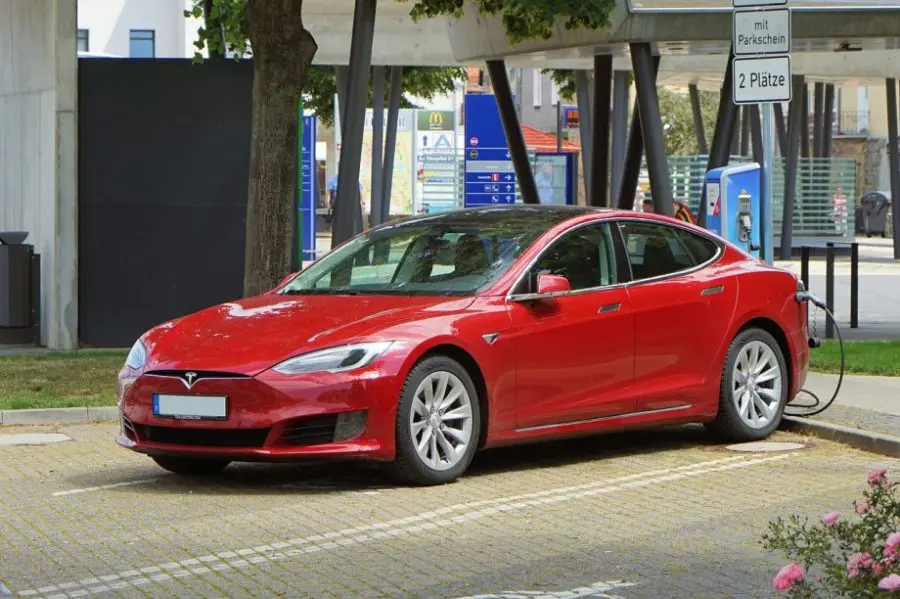
Let’s talk batteries, the lifeline of any electric vehicle. They store the juice that propels your EV, making them a key player in this electrified revolution.
From their role in vehicle performance to the types and technology that push the boundaries of distance and efficiency, we’re about to dive deep into the electric heart of these innovative machines.
Description of the role of batteries in electric vehicles
In the world of electric vehicles, batteries are what gasoline is to traditional internal combustion engine vehicles.
They are the heart of the vehicle, storing the electricity that powers the electric motor.
But these batteries are more than just oversized AAAs. EV batteries are high-capacity and high-efficiency powerhouses.
They are designed to store and release a large amount of energy, enough to power a vehicle for potentially hundreds of miles on a single charge.
The performance of an electric vehicle is significantly influenced by its battery.
Not only does it determine the range of the vehicle, or how far you can travel on a single charge, but it also impacts the vehicle’s acceleration, speed, and even its handling.
Moreover, batteries play a pivotal role in regenerative braking, a system that allows EVs to recharge their batteries when braking or decelerating, further improving the efficiency of the vehicle.
The different types of batteries used and their performance
Now, onto the types of batteries. Today, there are three main types of batteries used in electric vehicles: Lithium-Ion (Li-Ion), Nickel-Metal Hydride (NiMH), and Lead-Acid.
• Lithium-Ion (Li-Ion): These are the most common type of battery found in modern electric vehicles. Tesla Models, Nissan Leaf, and Chevy Volt, to name a few, use this type of battery. Li-ion batteries have a high energy density, meaning they can store a large amount of energy relative to their size and weight. This is key to achieving longer driving ranges. They also have a longer lifespan compared to other battery types, making them a popular choice for EVs.
• Nickel-Metal Hydride (NiMH): NiMH batteries were common in early hybrid models like the Toyota Prius. They don’t offer as high an energy density as Lithium-Ion batteries, but they are cheaper and have a good lifecycle. However, as Li-ion technology becomes more affordable, the use of NiMH is gradually declining.
• Lead-Acid: Primarily used in light electric vehicles (such as electric bikes and scooters), these batteries have been around for a long time. They are cheap and reliable but offer the lowest energy density of the three types and are also the heaviest. That’s why they aren’t used in full-size electric cars.
With advancements in technology, we can expect to see new types of batteries with higher energy densities and faster charging capabilities in the near future.
These improvements will only make electric vehicles more attractive and efficient. So, buckle up and enjoy the electrifying ride!
How Do Electric Vehicles Work?

Let’s dive into the magic behind electric vehicles, shall we? You hop in, press a button, and off you go, all without a single drop of gasoline.
But how does it all work? How do these machines convert electricity into motion, and how do they manage to do it so efficiently?
Stick around as we get under the hood and decode the workings of electric vehicles in an easy-to-understand way.
A step-by-step explanation of how electric vehicles function
So, let’s look at how an electric vehicle functions, step by step:
• Charging: It all starts with charging. You plug in your vehicle to a charging station or an electrical outlet, and electricity flows into the vehicle’s battery. Charging times can vary depending on the power level of the charger and the capacity of the battery.
• Storing Energy: The energy from the grid goes into the rechargeable battery pack. Here, it’s stored until it’s needed to power the vehicle.
• Powering the Vehicle: When you press the accelerator, electricity from the battery is sent to the electric motor. The electric motor then uses this energy to spin the wheels and move the vehicle forward.
• Regenerative Braking: When you apply the brakes, rather than purely wasting that energy as heat (like in conventional vehicles), electric vehicles utilize a process called regenerative braking.
The electric motor works in reverse to slow the vehicle down, and in doing so, it generates electricity which is sent back to the battery, extending your vehicle’s range.
Comparison with traditional fuel vehicles
Now, let’s compare this process with how a traditional fuel vehicle works:
I. Fueling: In a gasoline or diesel vehicle, the process starts with filling up the tank with fuel.
II. Combustion: When you start the vehicle and press the accelerator, fuel from the tank is sent to the engine where it’s burned in a process called combustion.
The heat from this combustion process is used to move pistons, which turn the crankshaft, which ultimately spins the wheels and propels the vehicle forward.
III. Wasting Energy: Traditional vehicles generate a lot of waste in the form of heat.
When you brake, the energy used to slow down the vehicle is released as heat and is wasted.
They also emit exhaust gases, a byproduct of burning fuel, which contribute to pollution and climate change.
So, as you can see, electric vehicles are quite different from their traditional counterparts.
They’re more energy-efficient, don’t require gasoline, produce zero tailpipe emissions, and even have the ability to recover and reuse some of the energy that’s typically wasted during driving.
Quite an upgrade, wouldn’t you say?
 : What You Need to Know
: What You Need to Know
Remember the days when you had to find a gas station, and sometimes even wait in line just to refuel your car?
Electric vehicles are shaking up that old routine. With them, you get to fuel up or should we say, charge up right at home while you’re fast asleep!
But how exactly does this work? And are all charging processes the same? From overnight charging to super-fast public charging stations, we’re about to make your transition to the electric side as smooth as possible.
So, stay tuned as we untangle the essentials of charging electric vehicles, and everything you need to know about it!
Explanation of how to charge electric vehicles
Now, let’s get into the details of how to charge electric vehicles:
I. Home Charging: The easiest and most convenient way to charge your EV is at home. This is as simple as plugging it into a regular electrical outlet (also known as Level 1 charging).
It doesn’t require any special equipment, but it does take longer – perfect for overnight charging.
For a faster charge, you can install a Level 2 home charging station, which requires a 240-volt outlet (similar to what a clothes dryer or oven uses).
II. Public Charging: When you’re on the go and need a quick charge, public charging stations are a fantastic option.
They’re usually found at places like shopping centers, parking lots, and even some restaurants.
Most public chargers are Level 2 or Level 3 (also known as DC fast charging), which can charge your EV battery up to 80% in just 30 minutes.
III. Workplace Charging: Many workplaces now offer charging stations for employees. This allows you to recharge your EV while you work, ensuring a full battery for the commute home.
The different types of charging stations and their features
There are various types of charging stations available:
I. Level 1 Chargers: These use a standard 120-volt AC outlet. While they’re the slowest method, they’re also the most affordable and convenient, as they don’t require any special installation.
II. Level 2 Chargers: A step up from Level 1, these chargers use a 240-volt AC outlet and can deliver about 10 to 60 miles of range per hour of charging. They’re commonly found in homes, workplaces, and public charging stations.
III. DC Fast Chargers (Level 3): As the name suggests, these chargers are the fastest. They convert AC power from the grid to DC power, which can be directly stored in the battery, speeding up the process.
Most DC fast chargers can provide 60 to 100 miles of range in just 20 minutes of charging.
However, frequent use of DC fast charging can reduce the longevity of the battery, so it’s best used sparingly for long trips.
By understanding how to charge your electric vehicle and the different types of charging stations available, you can plan your day and trips more efficiently.
So, say goodbye to those unnecessary gas station stops and enjoy the convenience of electric vehicle charging!
Range of Electric Vehicles: How Far Can They Go?
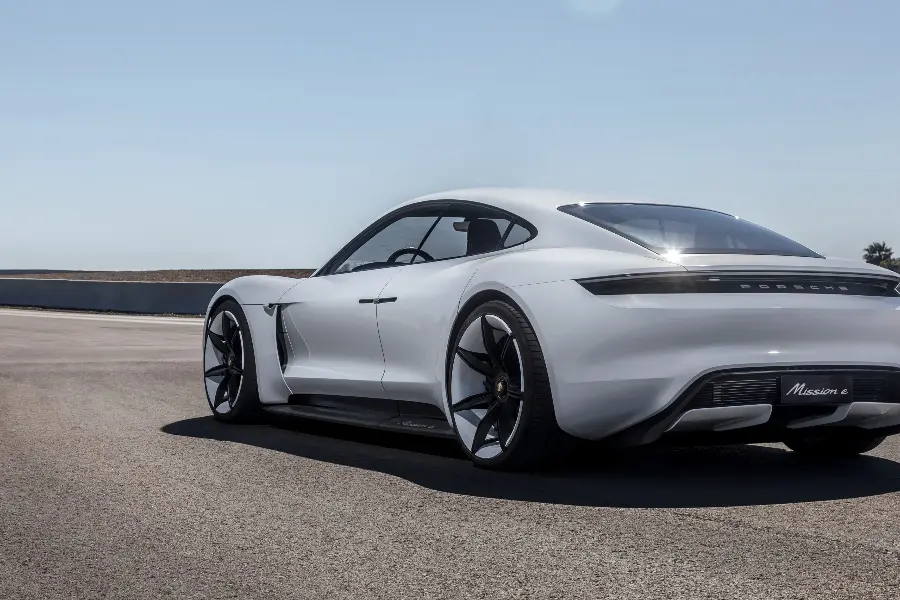
Have you ever wondered, How far can electric vehicles actually go? If so, you’re not alone.
It’s one of the most common questions potential EV owners ask and for good reason.
Range or the distance an electric vehicle can travel on a single charge is an essential part of the EV experience.
But, spoiler alert, it’s not as straightforward as you might think. The range can be influenced by several factors, from the type of vehicle to the way you drive it.
Buckle up, because we’re about to go on a deep dive into the world of electric vehicle range and discuss everything you need to know to maximize it!
Explanation of the concept of range in electric vehicles
Let’s start by understanding what range really means for electric vehicles:
Range in the context of an electric vehicle refers to the total distance your EV can cover on a full battery charge.
It is measured in miles or kilometers and is an essential metric when comparing different EVs.
The range of electric vehicles has significantly improved over the years, thanks to advancements in battery technology.
Nowadays, many EVs offer a range comparable to, or even exceeding, that of traditional gas-powered vehicles.
Factors affecting the range and how to maximize it
There are several factors that can affect the range of your EV:
I. Battery Size: This one is pretty straightforward – the bigger the battery, the longer the range. A larger battery can store more electric energy, allowing you to travel further before needing to recharge.
II. Driving Style: Much like with traditional vehicles, your driving style can greatly impact the range.
Aggressive driving with rapid acceleration and hard braking will drain the battery faster.
On the other hand, smooth, steady driving and utilizing features like regenerative braking can help extend your range.
III. Climate and Temperature: Extreme weather conditions can affect battery performance, which in turn impacts range.
In particular, cold temperatures can decrease the range as the battery must work harder to provide power.
IV. Vehicle Load: The weight your vehicle is carrying (including passengers and cargo) can impact the range.
More weight means the electric motor has to work harder, thus consuming more energy.
V. Use of Auxiliary Systems: Using systems like air conditioning, heating, and entertainment systems can also drain the battery and reduce range.
To maximize your range, consider the following tips:
Adopt a smoother, more efficient driving style.
Pre-condition your vehicle while it’s still charging.
Avoid carrying unnecessary weight.
Use energy-saving modes if your vehicle has them.
Remember, understanding your EV’s range and the factors that affect it is key to planning your journeys and making the most out of your electric vehicle experience.
It’s all part of joining the exciting world of electric mobility!
The Environmental Impact of Electric Vehicles
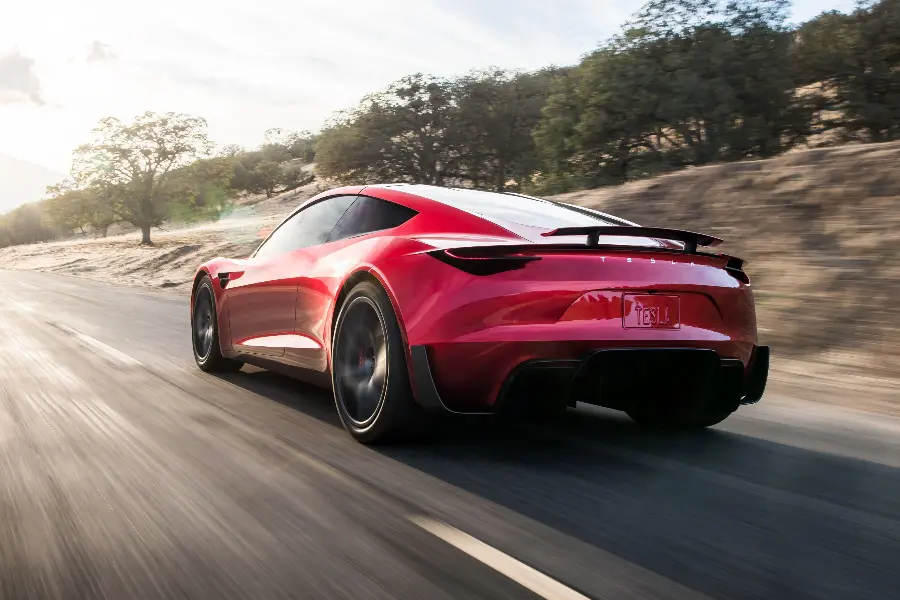
Are you ever curious about the footprint we’re leaving on our beautiful blue planet?
In this section, we’re going to put our detective hats on and investigate the environmental impact of electric vehicles.
We’ll chat about how these snazzy, silent machines affect our environment, compared to their petrol-drinking counterparts.
From carbon emissions to the life cycle of an EV, we’ll dig into all the nitty-gritty details that reveal why EVs could just be the heroes we need in our fight against climate change.
Let’s put that green thumb to good use, shall we?
Discussion on how electric vehicles impact the environment
Let’s dive into how electric vehicles make a splash in the environmental pool.
Electric vehicles, or EVs as we fondly call them, run on electricity instead of fossil fuels.
This means they emit zero tailpipe pollutants. Yes, you heard right, zero! This significantly reduces the amount of air pollution associated with travel.
But it doesn’t stop there; EVs are also whisper-quiet, helping to reduce noise pollution. It’s a pretty impressive environmental resume, isn’t it?
Comparison of the environmental footprint of electric vs. traditional vehicles
Now, how do they stack up against traditional vehicles?
Well, conventional cars run on petrol or diesel, which releases all sorts of pollutants into the air when burnt.
We’re talking nitrogen oxides, particulates, and carbon dioxide, which contribute to global warming.
And let’s not forget the noise! The constant hum of traffic is a far cry from the relative silence of EVs.
So in the battle of electric vs. traditional vehicles, it looks like the environmental title goes to our electric friends.
But, it’s also crucial to remember that while EVs are champions on the road, the production process and the sourcing of electricity can still have environmental implications.
That’s why renewable energy is a vital part of the EV equation!
Cost of Electric Vehicles: An Overview
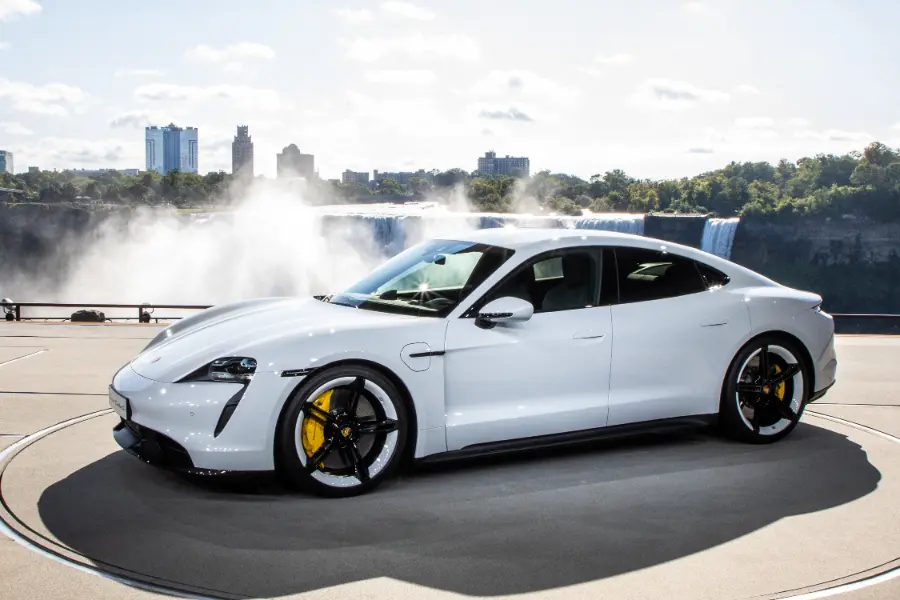
Jumping into the world of electric vehicles can be quite an exciting prospect, but it’s only natural to wonder about the costs involved.
Just like any vehicle, there’s more to consider than the sticker price on the windshield.
In the case of EVs, you’ve got charging costs, maintenance expenses, and of course, the price of the vehicle itself.
But, don’t let the numbers intimidate you! When you delve a little deeper, you’ll find that owning an EV can be quite economical in the long run.
So, let’s put our finance hats on and break down the costs of owning an electric vehicle, shall we? You might just be pleasantly surprised!
A detailed breakdown of the costs involved in owning an electric vehicle
Here’s a breakdown of the costs you’d typically encounter when owning an electric vehicle:
I. Purchase Price: This is the initial cost of the vehicle. While it’s true that the upfront cost of an EV can be higher than a conventional car, prices are steadily decreasing as technology advances.
Plus, many governments offer incentives and rebates which can significantly reduce the initial purchase price.
II. Charging Costs: The cost of charging your EV will depend on where and when you charge it.
Home charging typically costs less than public charging stations, and charging overnight during off-peak electricity rates can further reduce costs.
As a general rule, however, electricity is cheaper than gasoline, and this translates to lower fuel costs for EVs.
III. Maintenance Costs: EVs have fewer moving parts than traditional vehicles, which means less maintenance.
There’s no oil to change, no spark plugs to replace, and no exhaust system to maintain.
Of course, there will still be some maintenance costs (like tire rotations and brake fluid changes), but overall, you can expect lower maintenance expenses with an EV.
Comparison with the costs of owning a traditional vehicle
Now, let’s compare these costs with those of owning a traditional vehicle:
I. Purchase Price: While the initial cost of a traditional car may be lower, the long-term costs could end up being higher when you consider fuel and maintenance costs.
II. Fuel Costs: Gas prices can fluctuate greatly and tend to be higher than the equivalent cost of electricity for EVs. So, while filling up the tank might be quicker, it’s often more expensive in the long run.
III. Maintenance Costs: Traditional vehicles have many more moving parts that require regular maintenance. From oil changes to replacing timing belts, these costs can add up over time.
In summary, while the initial cost of an electric vehicle may be higher, the lower running and maintenance costs often make them a more economical choice in the long run.
Plus, with the added benefits of zero tailpipe emissions and increasingly robust charging infrastructure, going electric is becoming an increasingly attractive option!
Electric Vehicles and Renewable Energy
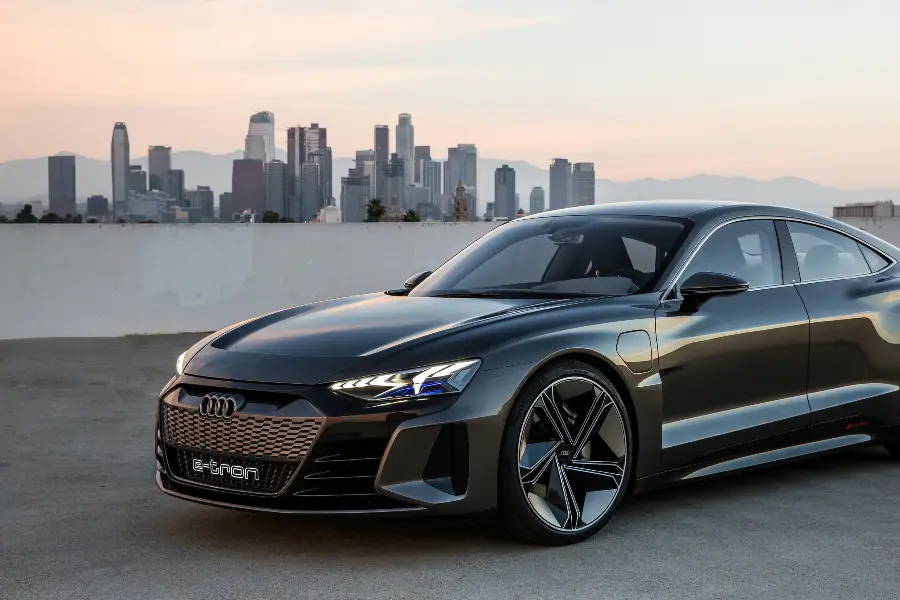
There’s more to the story of electric vehicles than just cutting down on gas station visits and reducing maintenance costs.
Did you know that EVs could play a pivotal role in our transition toward a renewable energy future? Quite exciting, right?
This section delves into the fascinating interplay between electric vehicles and renewable energy sources.
From charging your EV with solar power to how EVs can help balance the grid, we’ll explore how embracing electric vehicles could be a step towards a cleaner, greener, and more sustainable future.
So, buckle up, and let’s set off on this enlightening journey!
Connection between electric vehicles and renewable energy
You might be wondering, What’s the link between electric vehicles and renewable energy? Well, it’s quite a compelling one.
At the core, electric vehicles are powered by electricity, which can be generated from various sources – coal, natural gas, nuclear, and yes, renewables like solar and wind.
Here’s the intriguing part: the more we power our vehicles with electricity from renewable sources, the more we can decrease our overall greenhouse gas emissions.
Imagine this: You’ve got solar panels on your roof. During the day, these panels generate electricity, some of which you use to charge your electric vehicle.
Essentially, you’re fueling your car with sunshine! Not only does this reduce your reliance on fossil fuels, but it also makes the most of a renewable and practically inexhaustible energy source.
How electric vehicles can support the shift toward renewable energy?
But electric vehicles don’t just benefit from renewable energy; they can also support the shift towards it.
How? It’s all about grid stabilization. Renewable energy sources like wind and solar are intermittent.
They generate electricity when the wind blows or the sun shines, but not all the time.
This variability can be challenging for the electricity grid, which needs to balance supply and demand to remain stable.
This is where electric vehicles could play a crucial role. With their large battery systems, EVs could act as mobile energy storage units.
When plugged in, they could draw power from the grid during times of excess renewable generation (like sunny afternoons).
Then, when renewable generation is low, these vehicles could potentially feed power back into the grid.
This concept, known as Vehicle-to-Grid (V2G), could be a game-changer in managing the variability of renewable energy and ensuring a stable, reliable electricity grid.
By integrating electric vehicles with renewable energy sources, we’re not only driving towards a greener transportation future, but we’re also accelerating the broader adoption of renewable energy. It’s a win-win situation!
The Future of Electric Vehicles: What to Expect
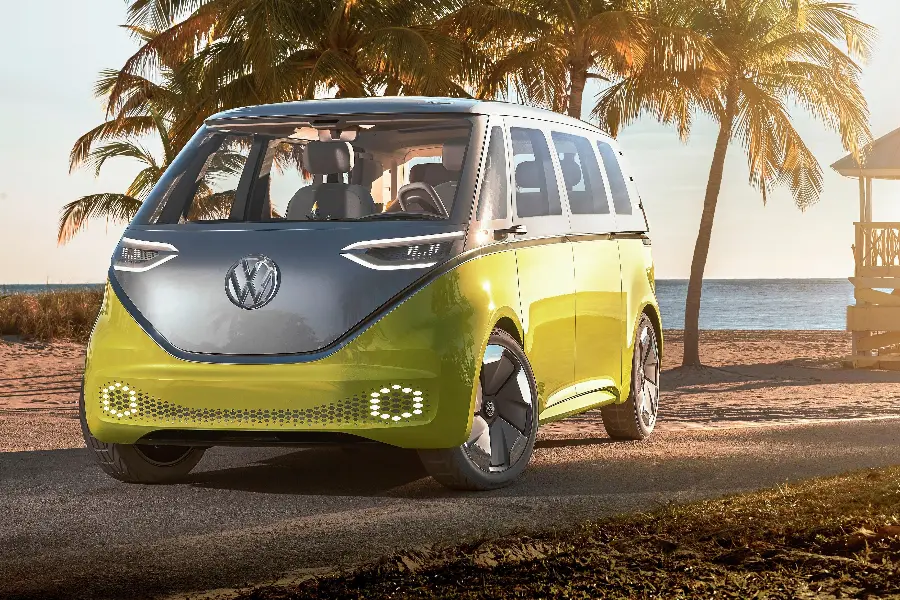
Just as we’re getting comfortable in the driver’s seat of the present, let’s shift our gears and look toward the horizon.
The future of electric vehicles, you ask? It’s nothing short of a thrilling, electrifying journey waiting to unfold.
There are going to be innovations, transformations, and possibly a few road bumps along the way.
But we’re all set to navigate through them, as the destination promises a sustainable, eco-friendly world where transportation is not only efficient but also fun.
In this section, we’ll steer through potential trends and developments that might reshape our roads and redefine our relationship with vehicles.
Buckle up, as we cruise into the exciting future of electric vehicles!
Exploration of the future trends in electric vehicles
We are on the cusp of a transportation revolution, my friends. Electric vehicles are the face of this revolution and the trends, oh they’re looking promising.
Ever heard of autonomous or self-driving cars? Well, Tesla and other major players are hard at work perfecting this technology.
How about Vehicle-to-Grid (V2G) systems? They allow EVs to feed back into the power grid during high demand or during an outage. Now that’s smart!
Furthermore, we’re seeing huge advancements in battery technology. We’re talking about lighter, more energy-dense batteries that could dramatically increase the range of EVs.
Also, keep an eye out for solid-state batteries, a technology that could potentially deliver higher capacity and faster charging times.
But that’s not all. The rise of electric pickups and commercial vehicles is set to electrify sectors that have long been dominated by gas-guzzling giants.
How these trends will shape the future of transportation
So, with these cool trends, what does the future of transportation look like?
Let’s just say it’ll be cleaner, quieter, and more efficient. Self-driving cars could reduce accidents caused by human error and lead to more streamlined traffic.
With V2G systems, EVs can act as mobile power storage units, contributing to a more reliable and resilient energy grid.
And the extended range? It would make EVs a practical choice for virtually everybody, no matter how far off the beaten path you live.
Electric pickups and commercial vehicles could revolutionize industries, from construction to long-haul transport, drastically reducing their carbon footprint.
Overall, these trends point towards a future where transportation is not only about getting from point A to B but also about doing it in the most sustainable and efficient way possible. Quite a ride, isn’t it?
The Benefits of Electric Bikes

Ah, electric bikes. They’re a game changer, aren’t they? Zipping through the city, catching a breeze, all while not breaking a sweat.
It’s a feeling hard to put into words. And they are not just about convenience and fun.
Electric bikes, or e-bikes as they’re often called, come with a bag full of benefits.
They are a greener way to travel, they can improve our health, and let’s not forget, they’re easy on our pockets too.
So, buckle up as we delve into the world of electric bikes and explore all the incredible advantages they bring to our lives and our communities.
And let’s not forget about electric scooters, another major player in this electric revolution.
They’re making headway as a convenient, fun, and eco-friendly way of getting around, especially for those shorter trips or last-mile journeys.
And the benefits don’t stop there. But we’re getting ahead of ourselves.
Let’s take a step back and delve into the benefits of electric bikes first, and then we’ll hop onto the world of electric scooters.
It’s going to be an exciting ride, so stick with us!
Discussion of the advantages of electric bikes
Before we begin, let’s take a moment to appreciate the incredible transformation the world of commuting has seen, all thanks to electric bikes and scooters.
They’re small, they’re swift, and they are sustainable, a trio that’s hard to beat. The advantages are many.
For starters, these machines are incredibly cost-effective, both in terms of purchase price and operating costs.
Imagine zipping past gas stations knowing you don’t have to stop and empty your wallet.
Moreover, electric bikes and scooters offer unparalleled convenience. Don’t feel like pedaling? Just switch to the electric mode.
Traffic jam? Just glide past. Want to fit in some exercise during your commute? Just pedal away.
Need to take public transport for part of your commute? Just fold up your electric scooter and take it with you.
But the perks don’t stop at just convenience and cost-effectiveness. Electric bikes and scooters are a green alternative for city commuting, reducing the carbon footprint and aiding in our fight against climate change.
Plus, they’re a joy to ride. Nothing beats the feeling of the wind in your hair as you whizz down the lanes!
How electric bikes can transform urban commuting?
Now let’s talk about how these electric marvels are transforming urban commuting.
Cities are getting more congested by the day, and traditional modes of transportation just aren’t cutting it anymore.
This is where electric bikes and scooters step in.
With their compact size, they can navigate through city traffic with ease.
This leads to shorter commute times and less stress for city dwellers.
The impact on urban life is huge, as people are starting to re-imagine their daily commutes with these electric alternatives, saying goodbye to traffic jams and hello to a more enjoyable and efficient way to travel.
Moreover, with their low operating costs and minimal maintenance needs, electric bikes and scooters are an affordable alternative for many people.
They’ve become a popular choice for commuting to work, running errands, or simply exploring the city.
And lastly, let’s not forget the environmental impact.
As more people adopt electric bikes and scooters for their commuting needs, we’ll see a reduction in pollution levels, making our cities cleaner and healthier places to live.
So not only are electric bikes and scooters reshaping how we move, but they’re also helping to transform our urban landscapes for the better.
Electric Scooters: A Convenient Alternative

As our cityscapes become more crowded and our schedules more hectic, we’re all looking for ways to streamline our lives, aren’t we?
Let’s turn our attention to a smart, snappy solution that’s making waves in the urban commuting scene, electric scooters.
These nifty little gadgets are not only sleek and stylish but also pack quite a punch when it comes to convenience and practicality.
From getting to work on time, to running errands, or simply maneuvering around the city, electric scooters are proving to be a game-changing alternative to traditional transportation.
So, let’s dive in and explore why these trendy two-wheelers are becoming such a favorite amongst city dwellers.
Buckle up, folks, because the world of electric scooters is as exhilarating as the ride itself!
Exploration of the benefits of electric scooters
Let’s unpack why electric scooters have become such an appealing choice for many.
First, their compact size means you can zip through traffic and squeeze into tight parking spots with ease.
Plus, they’re just fun to ride! But beyond the enjoyment factor, electric scooters are also wallet-friendly.
They require minimal maintenance and their running cost is significantly lower than gasoline-powered vehicles, meaning they’re a great way to save a bit of cash.
And did I mention they’re eco-friendly too? Yep, swapping out just a few car trips for scooter rides can help reduce your carbon footprint.
The Role of Electric Scooters in the Future of Short-Distance Travel
But what’s the future role of these zippy little machines, you might ask?
Well, as we look towards a greener, more sustainable future, electric scooters stand to play a pivotal role in short-distance travel.
Picture this: a world where traffic jams are a thing of the past and city air is cleaner. Sound appealing?
Electric scooters could help us get there. With continued advancements in battery technology improving range, and cities worldwide investing in safer infrastructure for micro-mobility, it’s easy to envision electric scooters becoming a mainstay of our future urban landscapes.
So, whether it’s a quick trip to the store or a commute to work, electric scooters could soon be the go-to choice for short-distance travel.
Maintenance of Electric Vehicles: A Guide
Ever wondered about keeping an electric vehicle (EV) in tip-top shape?
Or maybe, you’ve heard the rumors that EVs require less upkeep than their gasoline counterparts. Well, you’re not wrong!
In this section, we’ll dive into the world of EV maintenance. No need to be a seasoned mechanic to follow along, we’ll keep things simple, relatable, and fun, just like a chat with your car-savvy buddy.
We’ll discuss everything from battery care, to tire checks, and even how to maximize your vehicle’s lifespan.
Because remember, taking care of your EV isn’t just about saving on repair costs, it’s also about ensuring a smooth, reliable ride every time.
Ready? Let’s get under the hood – metaphorically, of course!
Detailed guide on how to maintain electric vehicles
Let’s embark on a journey to better understand the upkeep of these ingenious machines, the electric vehicles.
You see, while they might not need oil changes, they do have their unique set of needs.
First off, we have the battery, the heart of your EV. It’s crucial to keep it healthy, and we’ll show you just how.
Then, there’s the motor, the brakes, and even the tires, each requiring a certain level of care.
We’ll walk you through it all, offering tips and tricks to ensure your ride stays as efficient as day one.
Comparison of the maintenance needs of electric and traditional vehicles
Now, you may be wondering, How does all this compare to maintaining my old gas-guzzler?
Well, let’s put it this way: it’s a different ball game.
Traditional vehicles have their complexities – internal combustion engines, transmission systems, and so on, each requiring regular check-ups.
EVs, on the other hand, with fewer moving parts, tend to be less demanding.
However, this doesn’t mean they’re maintenance-free!
We’ll discuss the differences in depth and highlight why understanding your EV’s maintenance needs can save you both time and money in the long run.
So, buckle up and get ready for an informative ride!
Government Policies Supporting Electric Vehicles
Ready to delve into the world of laws and incentives designed to give electric vehicles a boost?
You see, governments worldwide are recognizing the vital role EVs play in reducing emissions and combating climate change.
As such, they’re offering various incentives to encourage us, the consumers, to go electric.
From tax credits to subsidies and even access to coveted carpool lanes, there’s a lot to uncover.
So let’s navigate this complex landscape together and explore how these policies are making it increasingly attractive to ditch the gas pump and plug in instead!
Overview of the government policies supporting electric vehicle adoption
When we talk about government policies supporting electric vehicles (EVs), it’s like opening a treasure chest of incentives designed to make EV ownership more appealing.
From tax credits and rebates to subsidies for charging infrastructure, governments worldwide are using a variety of tools to encourage us to make the switch.
We’ll dive into these policies to give you a comprehensive view of what’s out there.
The impact of these policies on consumers and the industry
But, you know, these policies don’t just benefit us as consumers.
They’re shaping the automotive industry as a whole, pushing manufacturers to innovate and produce more electric models.
We’ll examine this ripple effect, looking at how these incentives are altering the landscape of transportation, encouraging more sustainable practices, and driving us toward a cleaner, greener future.
Challenges Facing Electric Vehicles and Solutions
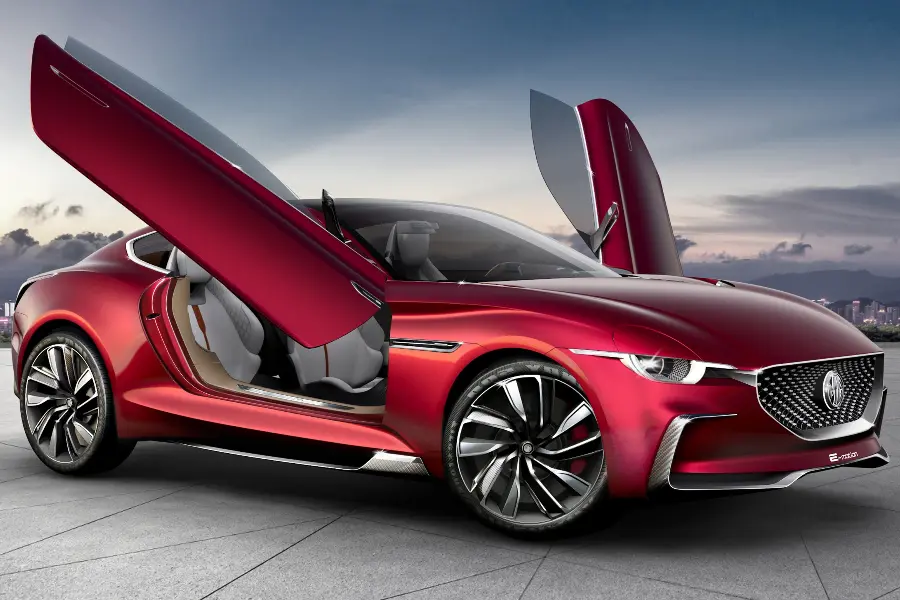
Alright, let’s dive into some real talk. While electric vehicles (EVs) are revolutionizing transportation with their numerous benefits, there are some challenges that they’re grappling with.
But, don’t be discouraged! These challenges present opportunities for growth and innovation.
In this section, we’ll unravel these issues, from the limited driving range and charging infrastructure to higher upfront costs.
But hey, every cloud has a silver lining, right? For every challenge, there’s a potential solution emerging.
We’ll explore how companies, researchers, and policymakers are working diligently to address these hurdles.
So, buckle up as we navigate through the exciting world of problem-solving in the EV universe!
Discussion on the challenges facing the adoption of electric vehicles
Ah, challenges! Where would we be without them? They keep us on our toes, and the world of electric vehicles (EVs) is no exception.
First up, let’s talk about range anxiety. It’s that niggling worry that your EV won’t get you to your destination before running out of juice.
This anxiety often stems from the current battery technology and charging infrastructure, which, while improving, isn’t quite as convenient as filling up at a gas station.
Another challenge is the higher upfront cost of EVs compared to traditional vehicles.
While the total cost of ownership often evens out over time due to lower fuel and maintenance costs, the initial price can still cause potential buyers to hesitate.
And of course, there’s the elephant in the room: the environmental impact of battery production and disposal.
Proposed solutions to these challenges
But hey, let’s not forget we’re problem-solvers here! To overcome range anxiety, battery technology and charging infrastructure are constantly evolving.
Rapid advancements in technology are increasing battery life, and more and more charging stations are popping up, even in remote locations.
When it comes to the cost issue, government incentives and subsidies are helping to lower the initial purchase price.
Plus, the cost of battery production is expected to drop as the technology improves and scales up.
And to address the environmental impact, companies are looking into more sustainable production methods and battery recycling programs.
So, in a nutshell, the journey to widespread EV adoption might have a few bumps in the road, but we’re well on our way with the map and compass in hand!
Public Perception of Electric Vehicles

Ready to delve into the fascinating world of public opinion?
It’s time we explore what people really think about electric vehicles (EVs).
Opinions can be as diverse as the types of EVs on the market, and they shape the landscape of adoption.
Some are completely on board, embracing the eco-friendliness and the thrill of instant torque, while others are still wary, concerned about range, cost, and the availability of charging stations.
Join me as we survey the scenery of perceptions, reactions, and attitudes toward EVs. They tell a captivating story of where we are now and hint at the road that lies ahead.
Analysis of How the Public Views Electric Vehicles
As we begin, we’ll first dive into a thorough analysis of how the public currently views electric vehicles.
From opinions formed based on personal experiences, and hearsay, to the influences of media and public figures, we’ll take a comprehensive look at it all.
We’re talking about the good, the bad, and maybe even the ugly.
Ways to improve public perception and promote wider adoption
But it doesn’t stop there. What are the ways we can uplift the perception and promote wider adoption of EVs?
We’ll explore education efforts, dispelling common misconceptions, the role of government incentives, and how advancements in EV technology can make these fantastic machines more appealing to the general public.
There’s no one-size-fits-all solution, but every bit helps in paving the way for a cleaner, greener future!
Electric Vehicles and Smart Cities

As we venture into our next topic, let’s gear up to delve into the burgeoning sphere of smart cities and how electric vehicles seamlessly fit into this dynamic landscape.
Picture this: a city humming with state-of-the-art technology, intelligent infrastructure, sustainable practices, and at the heart of it all a network of efficient electric vehicles. Exciting, isn’t it?
We’ll chat about the significance of EVs in these hyper-connected urban ecosystems, their impact on urban planning, and how they contribute to the vision of sustainable and accessible city life.
Buckle up, it’s going to be an electrifying ride!
The Connection Between Electric Vehicles and the Concept of Smart Cities
As we imagine our future cities, it’s easy to see why electric vehicles (EVs) are a key piece of the smart city puzzle.
Smart cities integrate technology into their infrastructure to create safer, more efficient, and sustainable urban environments.
But what does this have to do with EVs? Well, quite a bit, actually!
Electric vehicles, with their digital connectivity and potential for autonomous driving, perfectly complement the smart city framework.
They reduce greenhouse gas emissions, improve air quality, and enable the optimization of traffic management through data collection and analysis.
How electric vehicles can contribute to creating smart cities?
So, how exactly do EVs contribute to building smart cities? Let’s break it down.
First and foremost, they’re eco-friendly, aligning with the sustainability goals of a smart city.
Secondly, as vehicles become more autonomous, they’ll communicate with the city’s digital infrastructure to improve traffic flow, decrease congestion, and even allow more efficient use of public spaces currently dedicated to parking.
Charging stations can be integrated with renewable energy sources, while dynamic charging technology could see our roads themselves become power sources for EVs.
Thus, through these factors, EVs could play a transformative role in making our cities ‘smart’.
Conclusion: The Electric Vehicle Revolution
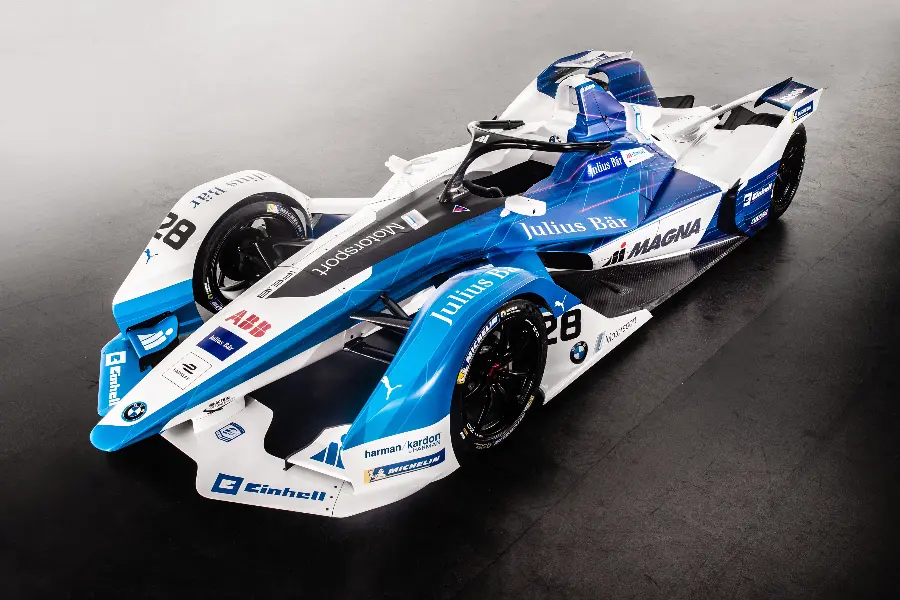
As we journey to the end of our exploration, it’s time to pause and reflect on the significance of what we’ve discovered.
The electric vehicle revolution isn’t just about swapping petrol pumps for charging points.
It’s an entirely new way of thinking about transportation, energy, and how we interact with our environment.
From the humble beginnings of electric vehicles to the dizzying array of models now available, the benefits they offer, and the challenges they face, it’s clear that EVs have the potential to transform our world in profound ways.
So, buckle up and join us as we bring our road trip into the future of mobility to a close, summarizing the key takeaways and considering what the journey ahead may hold.
Recap of the major points covered in the post
So, what an electrifying journey it’s been, hasn’t it? We’ve ventured through the vibrant world of electric vehicles, unearthed their roots in history, and uncovered the intricate nuts and bolts of their operation.
From the role of batteries to the importance of renewable energy, we’ve touched on the breadth and depth of topics associated with EVs.
The variety of electric cars, bikes, scooters, and their impacts on both urban commutes and longer journeys have been just part of our exploration.
We’ve also delved into the costs, maintenance needs, and how government policies are greasing the wheels for a more sustainable future.
Final thoughts on the future of electric vehicles and their benefits
As we wrap up, it’s clear the EV revolution is more than a spark, it’s a full-blown wildfire, reshaping our transportation landscape.
Challenges? Yes, they’re there. But with every challenge comes an opportunity, an opportunity for innovative solutions, for a greener future, and for you to be a part of this thrilling ride.
Electric vehicles are more than just vehicles; they’re stepping stones to a cleaner, more sustainable future.
Here’s to us embracing that future with open arms!



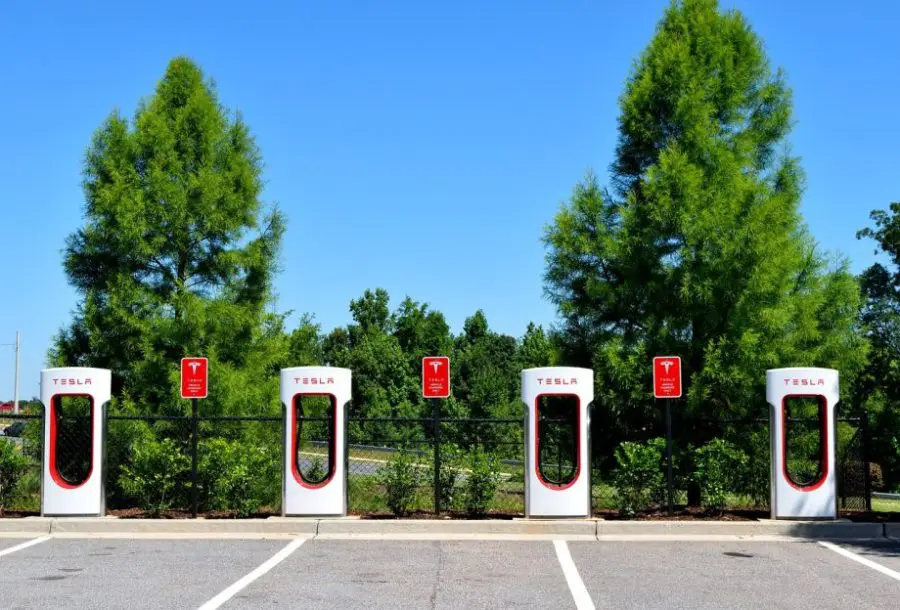 : What You Need to Know
: What You Need to Know


